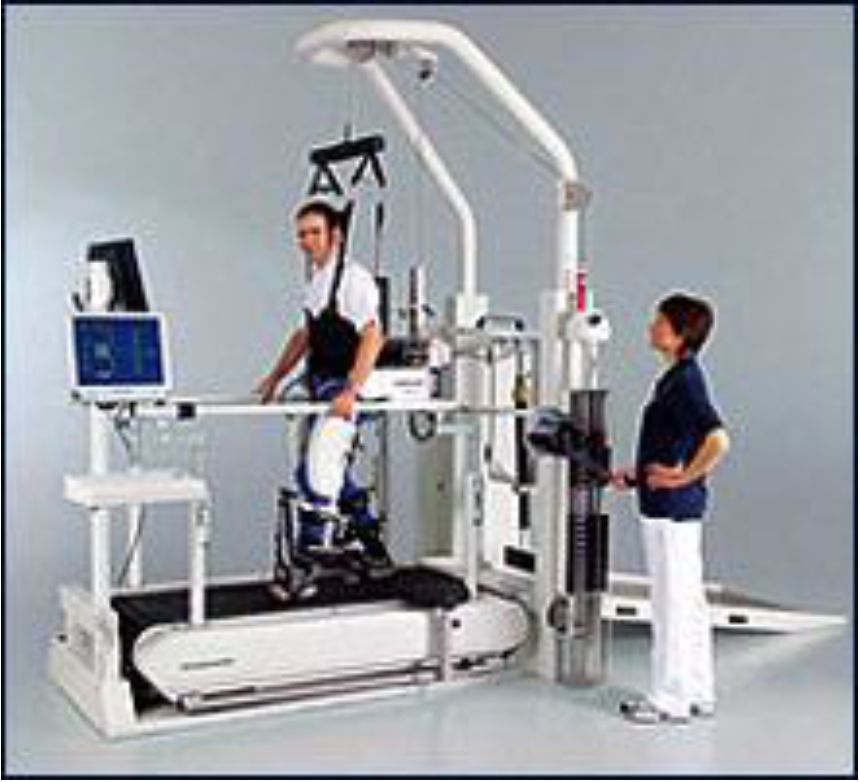STROKE-MOBILITY INTERVENTIONS, TASK SPECIFIC ROBOTIC TRAINING
SUMMARY
1. Theoretically, are able to provide alternative to labour-intensive therapist-assisted interventions, thus fulfil the principles of high intensity and task specificity.
2. Classified as either an end-effector device (i.e. patients are placed on foot plates that stimulate the stance and swing phases of gait) or an exoskeleton device (i.e. patients are outfitted with a programmable device that moves the hips and knees during gait).
3. End effector robotics, using body weight support and moving foot plates, has been shown to improve functional ambulation and functional mobility and may help with motor function, ADLs, muscle strength and balance[1][2].
4. Exoskeletal systems (e.g. LokoHelp, AutoAmbulator, Walkbot), are similar but do not improve ADLs and functional mobility[3][4].
5. They should not be used in place of conventional gait training (Evidence Level A for Early & Late Rehab).

Image: Lokomat exoskeleton dvice
Reference(s)
- ↑ Mehrholz, J., Thomas, S., & Elsner, B. (2017). Treadmill training and body weight support for walking after stroke. Cochrane Database Syst Rev, 8, Cd002840.
- ↑ Mehrholz, J., Thomas, S., Werner, C., Kugler, J., Pohl, M., & Elsner, B. (2017). Electromechanical-assisted training for walking after stroke. Cochrane Database Syst Rev, 5, Cd006185.
- ↑ Mehrholz, J., Thomas, S., & Elsner, B. (2017). Treadmill training and body weight support for walking after stroke. Cochrane Database Syst Rev, 8, Cd002840.
- ↑ Mehrholz, J., Thomas, S., Werner, C., Kugler, J., Pohl, M., & Elsner, B. (2017). Electromechanical-assisted training for walking after stroke. Cochrane Database Syst Rev, 5, Cd006185.
Cifu, D.X. (2020). Braddom’s physical medicine and rehabilitation. Elsevier. Get it on Amazon.
Cuccurullo, S. (2019). Physical medicine and rehabilitation board review. New York: Demosmedical. Get it on Amazon.
O’Young, B., Young, M.A. and Stiens, S.A. (2008). Physical Medicine and Rehabilitation Secrets. Mosby. Get it on Amazon.